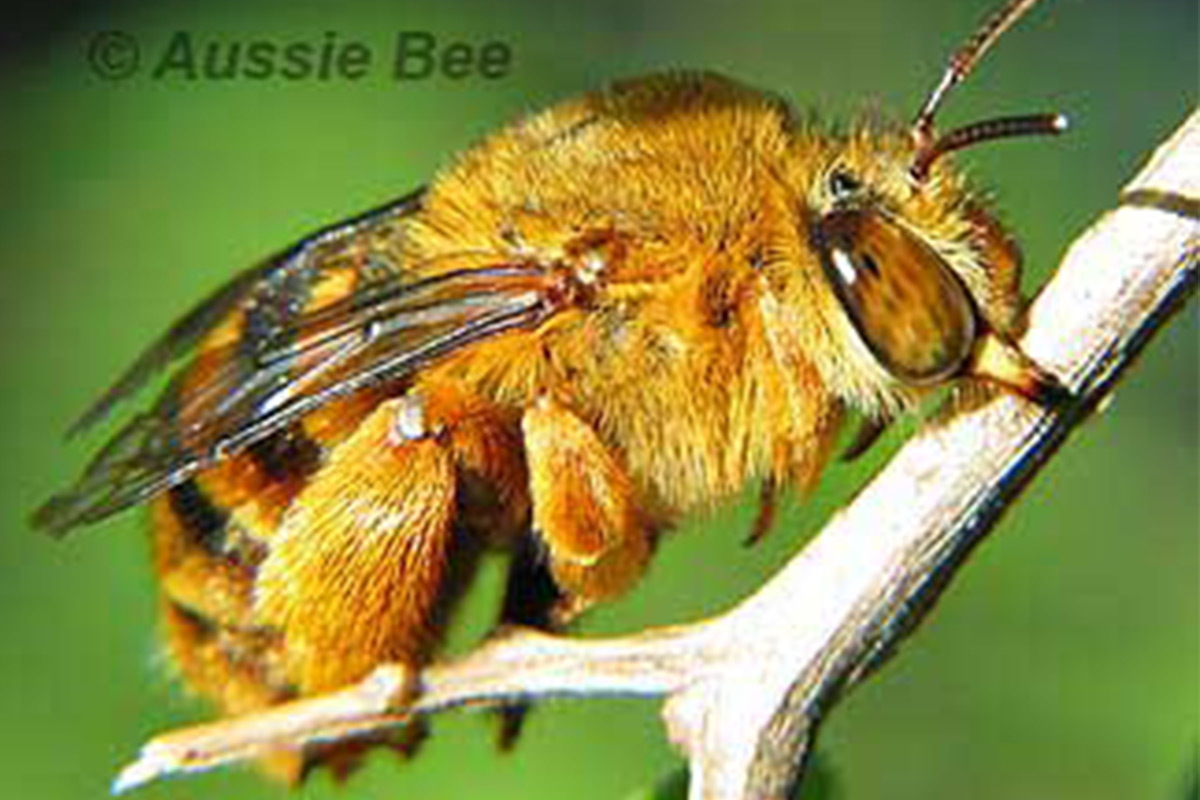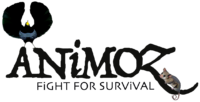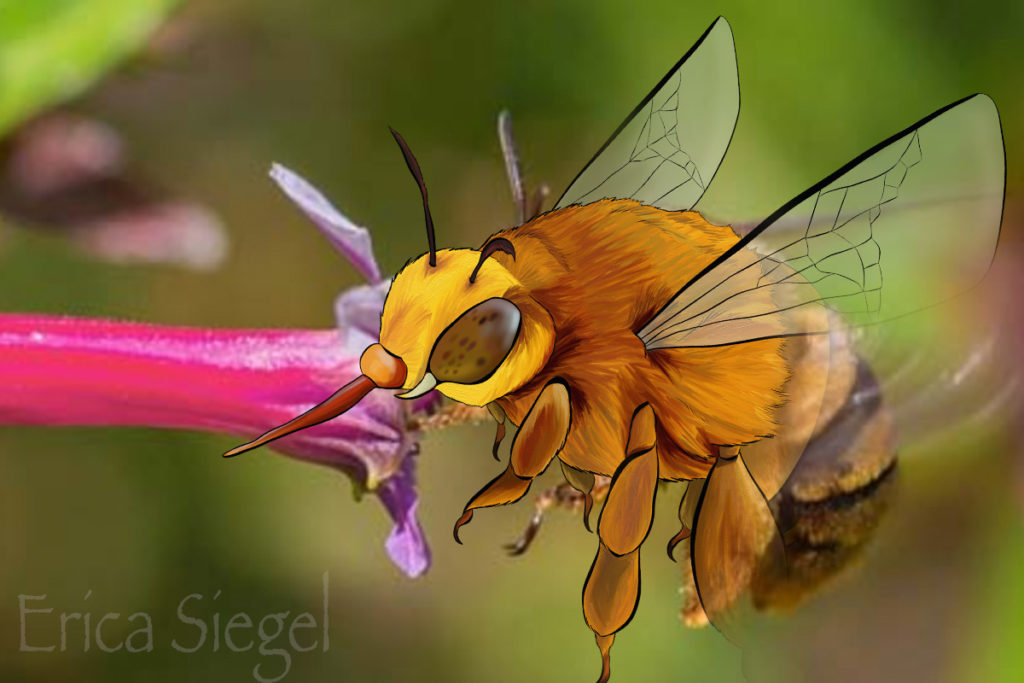The Australian Teddy bear bee is BOMBi!
Australia’s Teddy bear bee (Amegilla bombiformis – or as our Rangers know him: BOMBi) is one of the many Australian pollinators suffering from habitat destruction and industrial agriculture.
In ANiMOZ, BOMBi is a Base species who can be found in the Coast BiOME and helps rangers overcome Floods, Droughts and Persecution. His powers are Tube attack and Gardener but his weakness, as with so many of our Pollinators, is poison.
You can learn more about other Species as they become available here on the species page!
The Australian Native Bee Research Centre (ANBRC), hosting the Aussie Bee website, is based in the lower Blue Mountains, New South Wales. Co-founders Les Dollin (a skilled bushman) and Dr Anne Dollin (an entomologist) have explored the most remote areas of Australia, locating rare species of native stingless bees and studying their behaviour and nests.
On their website, they write about the genus that BOMBi sits within – Amegilla – which also holds Australia’s gorgeous Blue-banded bees.
“Teddy bear bees are solitary bees. Each female builds an individual nest for herself in a small burrow in the soil. However, quite a few Teddy bear bees may build nests close together in a sheltered location such as in an eroded creek bank or underneath a house.”
Want a free colouring-in book of ANiMOZ species?! Subscribe below and it gets sent straight to your inbox!

Dr Anne and Les also answer one of the most important questions for people all over Australia: how can we help save bees?
“Australian native bees need our help! Native bees are vital pollinators for our bushland and our crops. However, insecticide use can kill native bees, and land-clearing can destroy their food resources and nest sites. What can we do? It is important to avoid or limit the use of insecticides where possible. Plant a Bee-Friendly Garden to provide food for your local native bees, and set up Bee Hotels to supply them with nest sites. Read more about How to Help Save our Australian Native Bees!”
There is another way you can help Australia’s native animals like the Teddy bear bee: sign up to receive ANiMOZ emails below, and be part of the movement to help our future leaders fall in love with Australian wildlife.


This is so good to read. Thank you 🙂
I am always happy when I see bees in our garden. We have lots of native flowering plants and I think the bees are happy here.
I saw one today in wynuum west. Previously I saw one in murwillumbah nsw. Gorgeous bee but not often seen.
Hi Ranger Yvonne! Thanks for sharing that you saw a #wildANiMOZ! That’s so special – we’re very jealous here at HQ 🙂 Do you remember what plant BOMBi was buzzing around?
We saw one tonight in Wherrol Flat, NSW in the flowering native basil (Prosanthera rotunifolia)
Hey Ranger Blake, that’s incredible! If you got a photo, share it on socials and tag #wildANiMOZ so we can see it 🙂
Im pretty sure we have one that keeps coming in our house!
She visits every morning
Hey Ranger Nioda – that’s amazing!
Very jealous here at Headquarters 🙂
Ranger Joel
Seen one yesterday, wasn’t sure what it was at first. Didn’t get a photo as I was watering the veggie patch. Was on a flowering perennial basil
One mile Qld
Hi Ranger Lucinda – fantastic to hear 🙂
At Giles Weather Station in WA there are so many around one flowering bush!
Sounds amazing, Ranger Jan! If you get any photos of them and share them on socials, tag #wildANiMOZ so we can see them 🙂